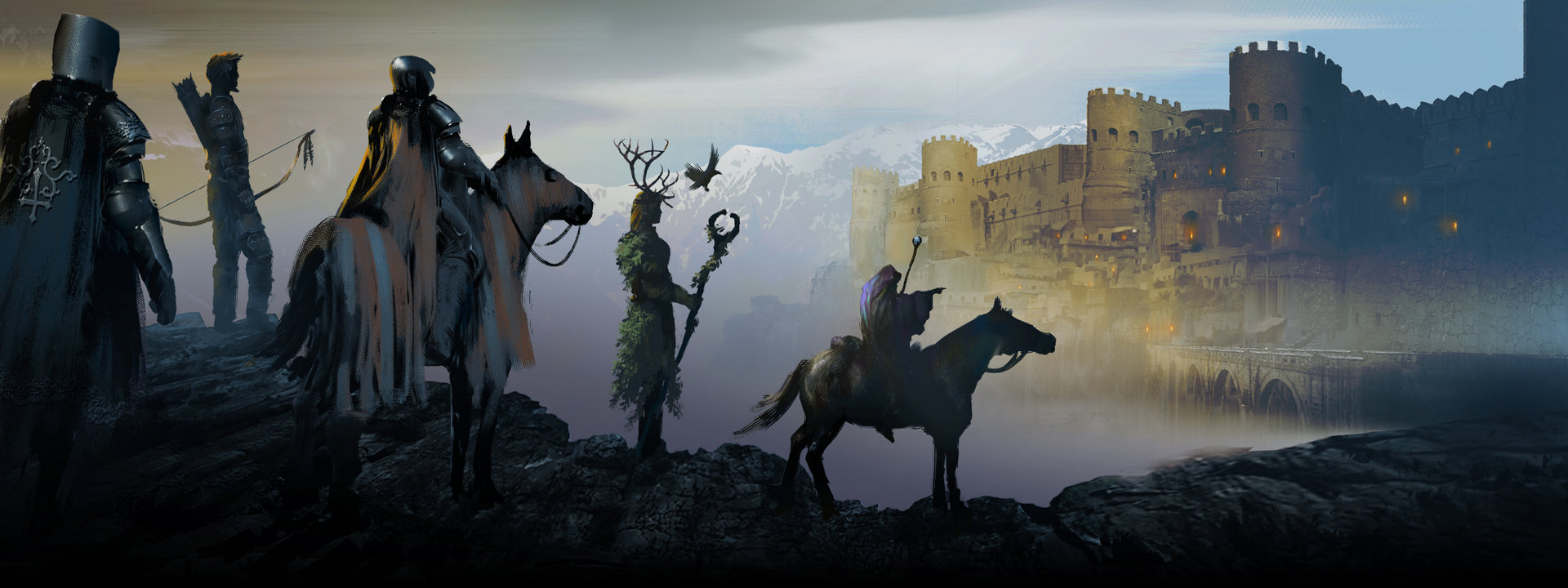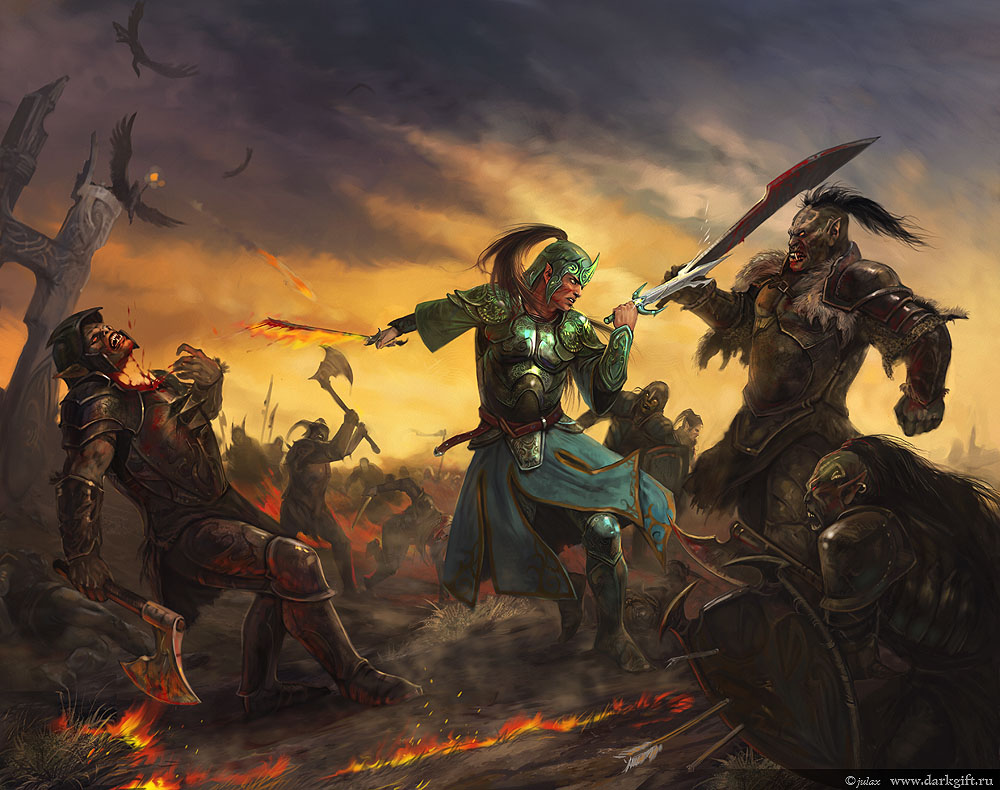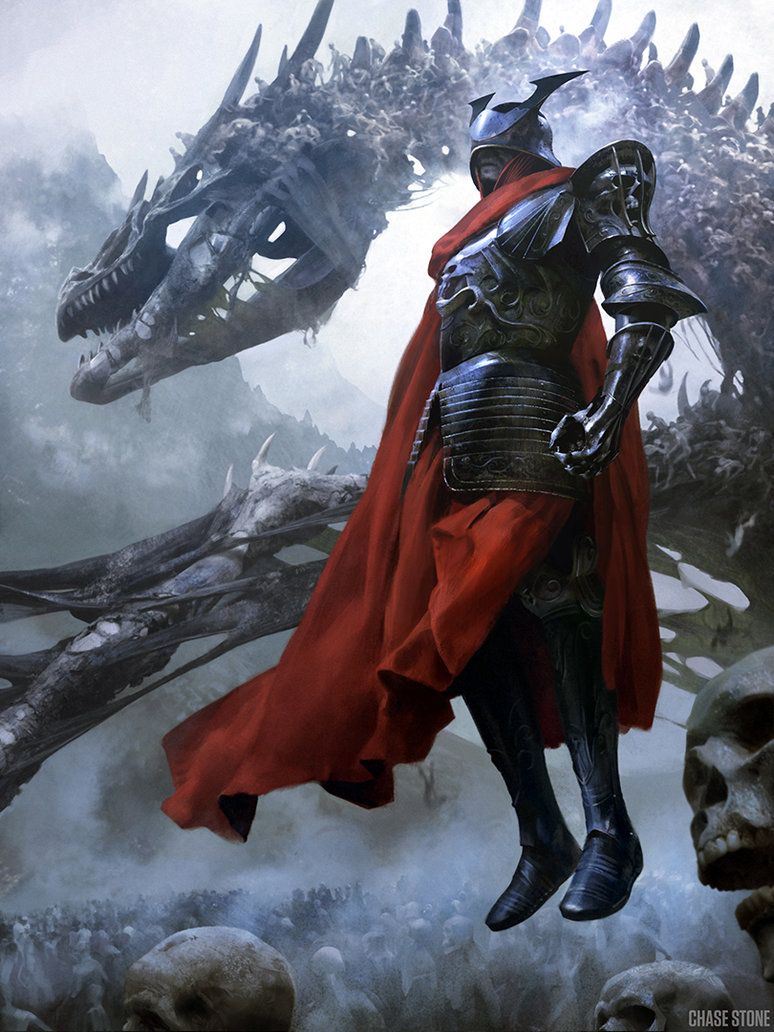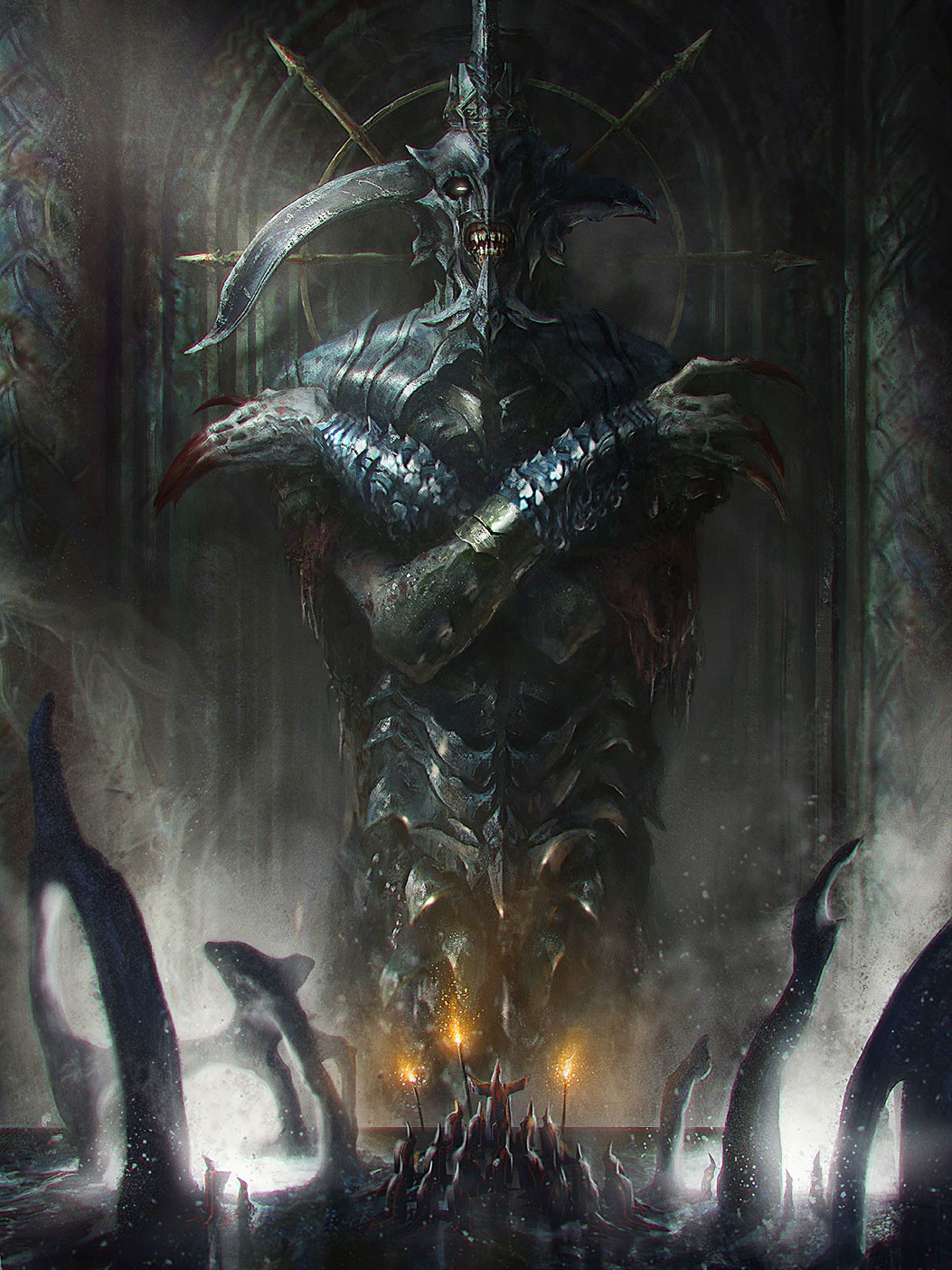Aar Tethlan & the Fall of Methanok
"A slave shall topple an empire..."
"And when the evil forces of Xanalanthi Xanaloth crested the mountains, they saw the city of their future conquest, Meeros Tilva. As they descended upon it, as they had so many previous civilizations, they had no idea they were walking right into a trap. For Meeros Tilva, the great city of mages, was merely a mirage, an illusion left behind to draw in the emperor's forces. When the imperial army breached the city limits, suddenly the mirage evaporated, leaving nothing behind but blasted land. And then, in the confusion of the moment, Aar Tethlan and his slave army, once the vanguard of the imperial invasion force, turned upon their masters. And amongst those masters was the ultimate prize... the emperor Razen Diatrasi himself. No one would have ever expected that upon this day, an empire would fall." ---From the journal of archivist Lucien Perren, proctor of the first church of Yareuss, Angleport.
Summary
Aar Tethlan, today known as the "Inhopthek" (translated as "The Smite of Heaven") and canonized as a god by the free peoples' of Hariel Minuta, was not necessarily the mythic figure storytellers have made him out to be. Some legends deem him the actual son of the desert god, Frasalaine, while others say he ascended to godhood after deposing the God Emperor of Methanok. Few take into account that despite his accomplishments (which include playing a substantial role in the toppling of an empire), Aar Tethlan was but a man. To fully understand him and his humble beginnings, one must look to the era in which he came of age...
During the lost age of Lumeria... in the southern tropics of Hariel Minuta... there one would find Methanok, the thriving empire of the first God Emperor. It is said that the ruler of Methanok, the "fair" emperor Razen Diatrasi, was granted his powers directly from the "outer world" and it's lone representative here on Gothenya, the god-being Faldrighel. The outer world is what the ancients called the "space beyond space... the time beyond time."
If the gods of Gothenya, who arrived from the heavens in their mountain home of Celene, represented the workings of the very cosmos we inhabit, the outer beings represented something far more alien, something far beyond our cosmos. Something that we now know wishes us no good will. But to the Lumerians, especially the people of Methanok, all they knew was the "kind word" of Diatrasi, "The Gentle."
The Methanok empire expanded more rapidly than any in the history of the world. We have many ruins marked by its symbol (of an open palm with snake fingers) to attest to this. At its height, it spanned the majority of both Hariel Majour and Minuta, though its capitol city lay in the dead center of what is now the Wastes of Veric.
The wastes were not always so desolate, however. Once they were a vibrant forest, lush with life. The perfect garden of Eden. But Diatrasi counted himself (as all God Kings or God Emperors do) amongst the blood mages of "Faldrighel the Ravenous." Faldrighel who eats the land and leaves nothing but ash. This is why the empire needed, constantly, to expand. It was eating the very paradise it inhabited, slowly turning the land to a blasted waste. For the use of blood magic defiles all life surrounding its use. It draws its power from the very flora and fauna of the region. It consumes and leaves little in return.
One small, independent city that caught the eye of Diatrasi was that of Tethlan. A small, agricultural community, living off the land at the far corner of what would now be called The Horta. The Tethlani were a peaceful people, and were never prepared for what soon came. For once the emperor set his sights on a region, he was like a dog with a bone.
One of the most powerful generals under Diatrasi's command was the wizard Xanalanthi Xanaloth. Xanaloth claimed to be a being from beyond, hailing from the same "space beyond space" as the great Faldrighel itself. Today, we can safely assume that Xanaloth was indeed inhuman, and perhaps an illithid (more commonly referred to as a "mind flayer"). Diatrasi unleashed Xanaloth upon Tethlan, along with the mage's army of imperial reavers. The Tethlani never stood a chance. Like so many others, they fell within days, their people becoming slaves to an expansionist empire "of peace."
The most common use for slaves within the empire was as builders and, occasionally, front-line fighters. In fact, only the largest and strongest from amongst the taken were awarded the honor of being "first to die," representing the emperor on the field of battle. And from these strongest was culled one Aar Tethlan (roughly translated to "Son of Tenthlan"). Aar was son of Tethlan's ruling elder. Part of a lineage from which the city derived its name. He was never much cut out for politics, but he showed great promise in what the Tethlani called "the defensive arts." In fact, the conquest of Tethlan would likely not even have taken days if it weren't for Aar.
Because he knew resistance would bring his people further pain, Aar Tethlan allowed himself to become a weapon of the Methanok Empire. He quickly found himself at the vanguard of its invading forces. Though a mighty warrior, Aar had no taste for conquest. It didn't take long for him to begin sowing the seeds of rebellion.
Everything came to a head when Xanalanthi Xanaloth was set to invade the thriving free city of Meeros Tilva. Knowing in advance of the planned invasion, Aar was remarkably able to get a message out to the rulers of the targeted city, warning them of the threat to shortly come. He accomplished this by breaking ranks during a patrol of the empire city of Methanok, when a riot within the city lent him the opportunity to briefly escape and get word to a merchant who traded with Meeros Tilva. He put himself at remarkable risk, as deserters are executed, no questions asked.
Legend has it that Aar managed to develop a secret correspondence with this merchant, trading information back and forth to Meeros Tilva. It's during this brief period of communications that Aar's plan was hatched.
And so it was that the time arrived for the invasion of Meeros Tilva. This was to be one of the final major cities that would fall to the might of Methanok. As such, the emperor himself attended his generals in the expeditionary force. With the full might of the empire on hand, it seemed as if nothing could stop them. But the mages of Meeros Tilva were prepared...
Using all the arcane skill they coulf muster, the entire city of Meeros Tilva was transported into a pocket dimension, on contained within the very fabric and weave of a magic tapestry... The Tapestry of Meeros Tilva. This cloth depiction of Meeros Tilva, was in fact the very city it depicted! The tapestry was entrusted to the merchant who conspired with Aar Tethlan, and moved to safety before the invading force's arrival. Left behind was but a detailed mirage, an illusion of the Meeros Tilva that was whisked away to another plane of existence.
But that wasn't the only thing left behind. For the mages, having learned of the emperor's promised attendance, planted an arcane trap. One that would divest the blood mages of their defiling powers. For blood magic only works where there is life to leech. And Meeros Tilva took the very life from the land, secreting it away within the weave of the tapestry.
When the army and its blood mages detected the deception, the slave army (that outnumbered their own imperial forces) turned on its masters, encircling and overpowering them. This was aided by a foreign mercenary force, hired by the merchant, using the last of Meeros Tilva's treasury. Thus, the imperial forces were caught in a pincer vice, trapped between their own slaves in open revolt, and a strong mercenary army armed with the advantage of surprise.
It is said that Aar Tethlan himself slew both Xanalanthi Xanaloth and the Emperor, but this is likely pure conjecture, as the chaos of the battle precluded an accurate assessment of the particulars of combat. Not to mention, Aar's own memoirs never claimed such glory. Regardless, in the aftermath of the penultimate battle, Aar Tethlan was crowned the savior of the free peoples of Hariel. But he refused to take on any position of authoritarian leadership, though it was quickly offered to him.
No more, he declared, would the land and its peoples be under the sway of a sole mortal, despite his wisdom or power. Thus Aar Tethlan declared what seems to be perhaps the world's first true democracy. One that seemed to last until the very end of the Lumerian Age. The empire of Methanok was now reborn as the Republic of Methanok.
"The mirage fades..."
Historical Basis
The war journals of Aar Tethlan, compared and contrasted with those of Xanalanthi Xanaloth, provide the primary source of historical facts presented herein.
Spread
As information regarding the Lumerian Age has recently become more widespread, thanks in large part to the tireless work of the Custodians from their Tower of Light, much in the way of the age's legends have come to the fore.
Variations & Mutation
Aar Tethlan, after his defeat of the Emperor Diatrasi, was canonized as a demi-god (against his humble wishes) by the freed citizens of Menthanok. He was renamed by the people, upon his death, under the conventions of godhood. Thus, once entombed with the heroes of yore, Aar Tethlan became Inhopthek, the "Lord of the Free."
In some versions of the legend, the Wastes of Veric were created the moment Meeros Tilva was transported into the weave of the arcane tapestry, taking all life in the region along with it.
Cultural Reception
There are several camps regarding the reception of the legend of Meeros Tilva and the fall of Methanok. Many see it merely as a fairytale, presuming Methanok fell to much more mundane causes. There is a growing number of scholars, however, that see the tale as something more than just fantastical. Perhaps the legend is true and somewhere an ancient city still exists, sewn into the weave of a magic tapestry...
In Literature
Very little literature survived the Lumerian Age, and only fragments of both Aar Tethlan and Xanalanti Xanaloth's journals were ever recovered. Every version of the legend, in popular culture and otherwise, was fully formed from the conjecture of scholars and bards, to both enlighten and entertain. All stories should be thus taken with a grain of salt.
Remove these ads. Join the Worldbuilders Guild










if I may give you some feedback. the Font in the titles makes them hard to read. Also, I like the idea and all, but does it fit the contest? who died? And what legend did it generate after death?
Yeah, the font is insufferable. And I probably didn't make it clear enough about the death of Aar and the subsequent myths that arose. I'll re-edit that. Thank you!